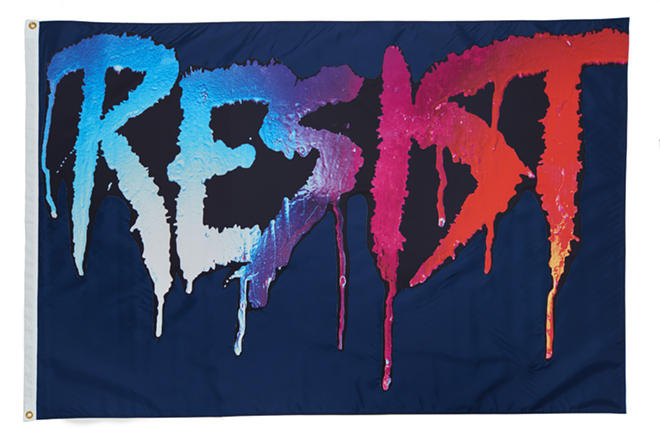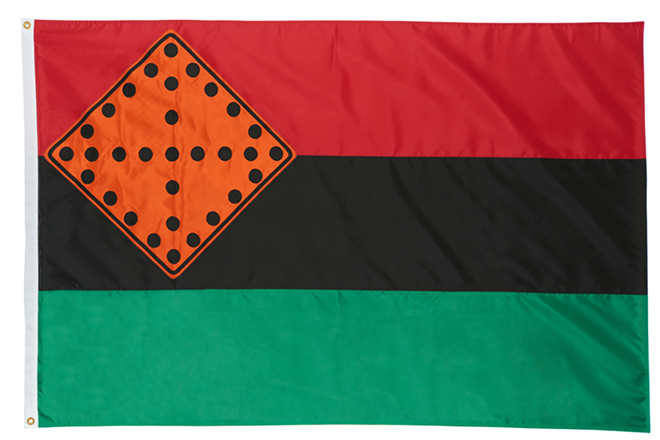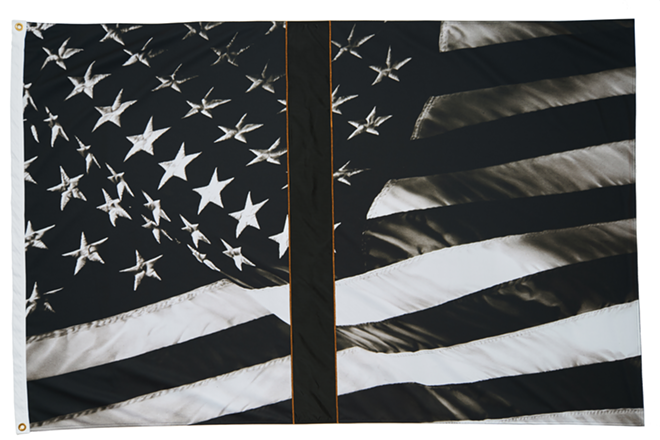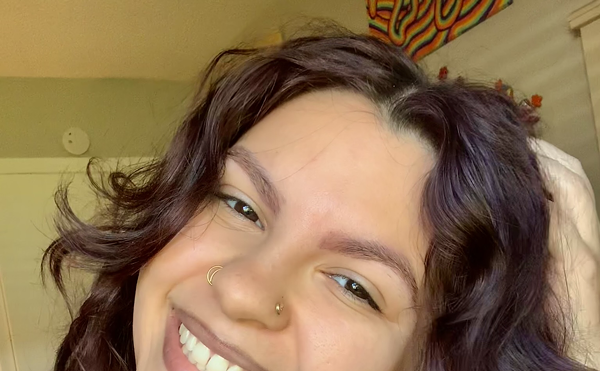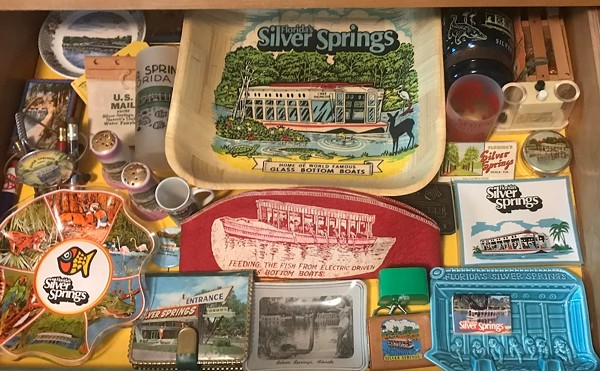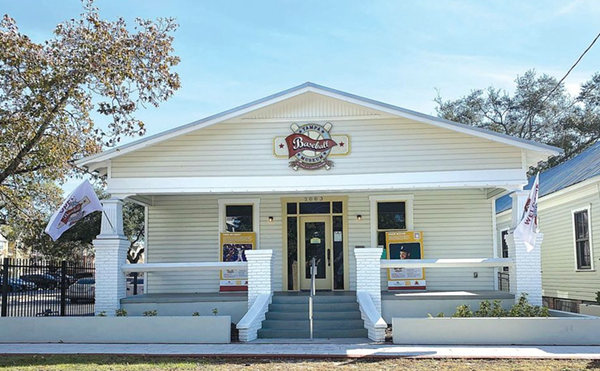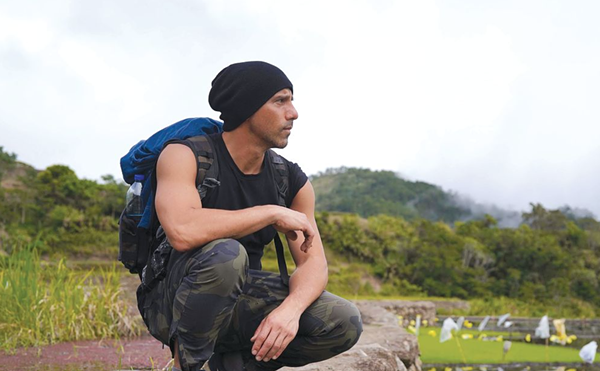![Wettengel Elementary students saying the Pledge of Allegiance in Guam, 2014. - By Official U.S. Navy Page from United States of America [Public domain], via Wikimedia Commons/CC](https://media2.cltampa.com/cltampa/imager/u/blog/11987469/sailors_say_the_pledge_of_allegiance_with_guam_elementary_st.png?cb=1642532850)
![Greenpeace Resist banner during the 2017 People's Climate March. - By Dcpeopleandeventsof2017 (Own work) [CC BY-SA 4.0 (http://creativecommons.org/licenses/by-sa/4.0)], via Wikimedia Commons](https://media2.cltampa.com/cltampa/imager/u/blog/12038743/people_s_climate_march_2017_in_washington_dc_105.59b6c2a19cca5.png?cb=1642533614)
If there's one thing I've learned about the Pledge of Allegiance, it's this: People like it the way it is. It has changed through the years, but never without a fight (or at least a few complaints). This is why, when the announcement for Pledges of Allegiance crossed my proverbial desk, I was hesitant. There was no way to write about Creative Time's latest public art project without throwing politics into the mix.
"It is clearly a political project," says Nato Thompson, Creative Time's Artistic Director, "The flag is a political thing..."
The project was originally conceived by NYC resident, Alix Browne. Inspired by Greenpeace's Resist banner and other random acts of activism, Browne reached out to Creative Time, and together they recruited artists to design additional flags.
Sixteen artists, mostly New Yorkers, answered the call, each designing a flag to express their core values. Collectively, the flags call out national divisiveness, political polarization, environmental crises, xenophobia, and racism in America.
Though out of place in 2017, most of these problems aren't exactly new. It was a combination of xenophobia and national divisiveness that prompted the writing of America's original Pledge of Allegiance back in 1892. The Civil War was still fresh in the nation's memory; waves of new immigrants were arriving from Russia, Poland, Italy, Armenia and Bohemia; and a bunch of puritanical nativists were seriously worried about maintaining national unity in the face of such diversity.
Francis Bellamy, author of the Pledge of Allegiance, was one such nativist. Bellamy could trace his ancestry back to the American colonies, and he looked down on people with less of a pedigree. America, he said, was "built purely of Anglo-Saxon stuff." He referred to Italian immigrants as "the vilest elements." And Jewish immigrants coming to America from Poland and Russia were, according to Bellamy, "parasites of tenement houses and worthless vendors." Yes, Bellamy was a racist product of racist times.
Yet somehow, Bellamy rose above his personal prejudices when he wrote the Pledge. Rather than trying to cast out our nation's immigrants, Bellamy opted to Americanize them. He believed in the power of the American flag to unite people of different backgrounds under a common ideal: "liberty and justice for all." Back then it was more of a dream than a reality, but it's a dream we've held on to.
Can a flag hold such mystical power? With our nation so divided, it's nice to think it could.
Now we (about half our nation, not us personally) fear a different kind of immigrant — the Mexican immigrant and the Muslim immigrant. Our president has already betrayed his fear of both types.
"When Mexico sends its people, they're not sending their best. They're not sending you," he's said. "They're not sending you. They're sending people that have lots of problems, and they're bringing those problems with us. They're bringing drugs. They're rapists. And some, I assume, are good people." As far as Muslims are concerned, Trump has suggested we ban them. During his presidential campaign, he called for "a total and complete shutdown of Muslims entering the United States until our country's representatives can figure out what the hell is going on." Whatever happened to liberty and justice for all?
Given the state of things, Thompson initially worried that the Pledges of Allegiance project was "too innocuous." Is that all we can do — put up flags? he says he asked himself. We need to get in the streets; we've got to mobilize; we've got to do something, he thought. But then, he says, he reconsidered: "You know what? Sometimes in life when people are feeling under attack (and this is when the country was talking about getting rid of the National Endowment for the Arts) sometimes it's good to just produce a sense of community...that's important right now."
When Marilyn Minter debuted her flag, a black banner with "Resist" in bold blue, red, and purple letters, someone took it down.
"It's no small thing to put even a flag outside your building in this day and age," says Thompson. "I would think our cultural institutions are so strong they could just do that, but the public nature around things is so divisive, where people are very worried about public backlash and governmental backlash. The idea that there's a free space of expression — that is a very fragile thing right now in the United States. So I'm game on for every cultural institution in the country getting involved."
There are now nine institutions (in addition to Creative Time) across the nation who have agreed to fly the flags from their buildings, including the University of South Florida's Contemporary Art Museum. Post-election, one of Creative Time's project managers reached out to USF about Pledges of Allegiance.
"We jumped at the chance to participate," says Sarah Howard, USF's Curator of Public Art, "Everybody got on board really quickly...and that's not typical that everybody would be in vast agreement...It was a really effective tool in unifying even our own staff."
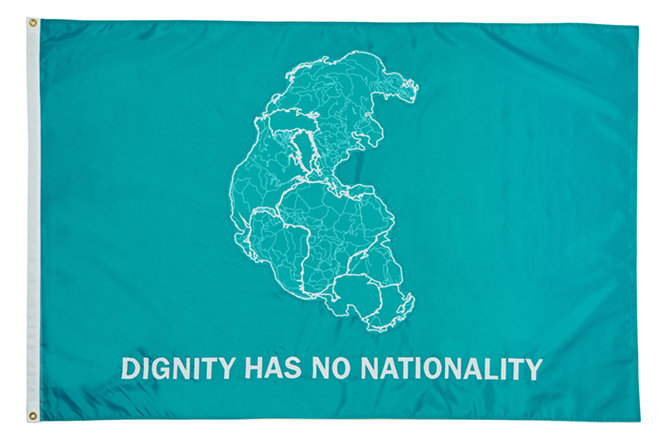
The museum quickly gained the university's permission to mount a new flagpole on their building and hoisted the second flag in the series, Tania Bruguera's Dignity Has No Nationality, following the current administration's travel ban.
One month later, following the Charlottesville protests, they raised the third flag in the series, Nari Ward's Breathing Flag. Inspired by the Black Lives Matter movement, Ward's Breathing Flag combines Marcus Garvey's Universal Negro Improvement Association flag (a.k.a. the Black Liberation Flag) with an African prayer symbol called the Congolese Cosmogram.
In September, they raised Robert Longo's flag, hoping to ramp things up and "address some of what's going on politically and socially in our country..." The flag shows five inches of black space bisecting a black and white version of the America flag, emphasizing the current divide in the United States.
Jayson's Musson's "A Horror" is on display now, just in time for Halloween.
There are now 11 flags left, to be displayed in one-month intervals throughout the year. Although many of these flags highlight matters of dissent in this country, further division is not the goal. Rather, in the words of Sarah Howard, they hope to "raise awareness of contemporary cultural issues, initiate dialog and address critical global, political and social concerns in a creative and accessible way."
This isn't about changing the Pledge of Allegiance or denigrating the American flag. It's about reminding us of what these symbols stand for: liberty and justice for all.
It's the American Dream. Let's make it a reality.

